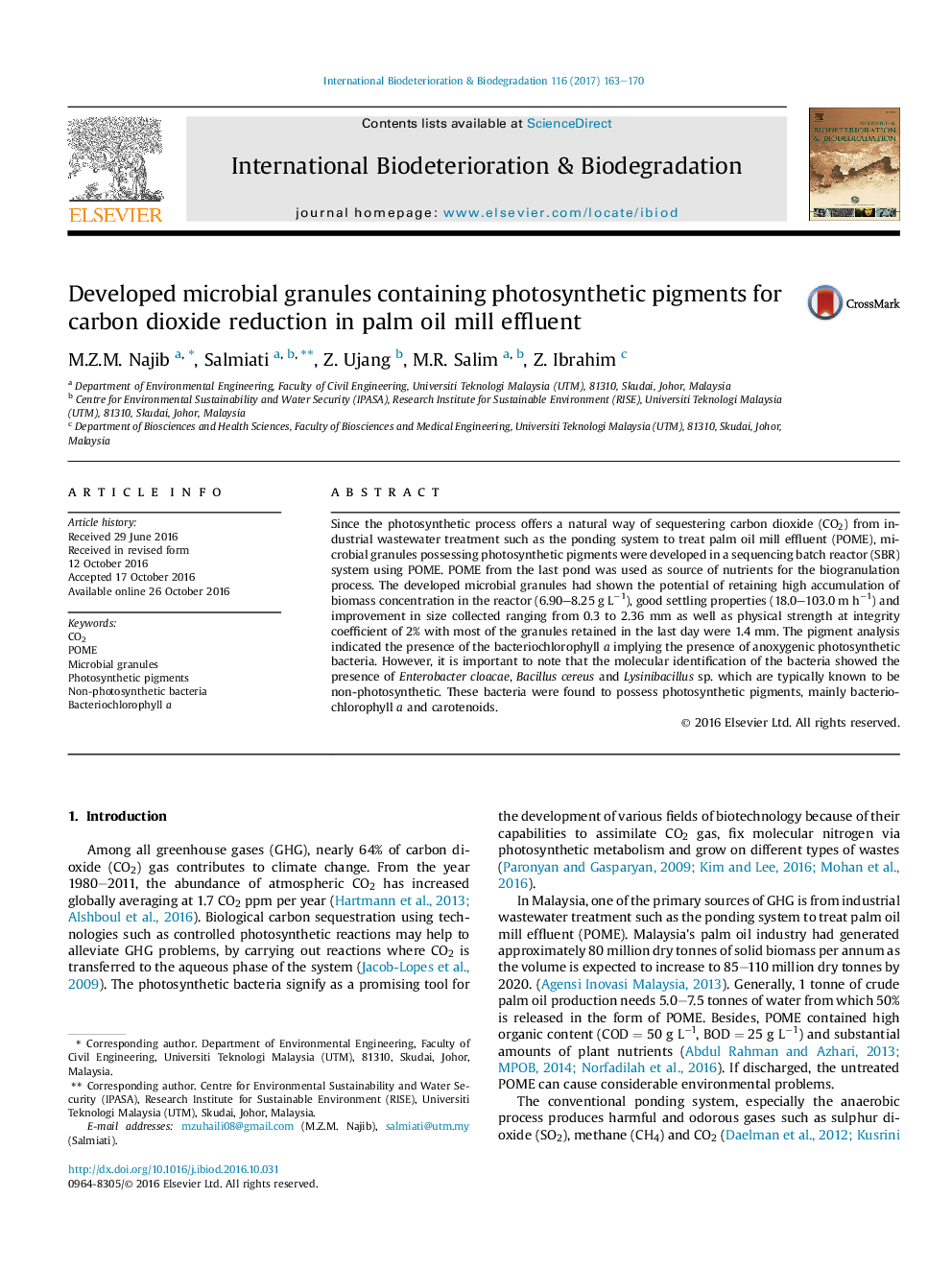| کد مقاله | کد نشریه | سال انتشار | مقاله انگلیسی | نسخه تمام متن |
|---|---|---|---|---|
| 8844006 | 1616301 | 2017 | 8 صفحه PDF | دانلود رایگان |
عنوان انگلیسی مقاله ISI
Developed microbial granules containing photosynthetic pigments for carbon dioxide reduction in palm oil mill effluent
ترجمه فارسی عنوان
گلوله های میکروبی توسعه یافته حاوی رنگدانه های فتوسنتزی برای کاهش دی اکسید کربن در پساب خلبان روغن نخل است
دانلود مقاله + سفارش ترجمه
دانلود مقاله ISI انگلیسی
رایگان برای ایرانیان
کلمات کلیدی
موضوعات مرتبط
علوم زیستی و بیوفناوری
علوم محیط زیست
علوم زیست محیطی (عمومی)
چکیده انگلیسی
Since the photosynthetic process offers a natural way of sequestering carbon dioxide (CO2) from industrial wastewater treatment such as the ponding system to treat palm oil mill effluent (POME), microbial granules possessing photosynthetic pigments were developed in a sequencing batch reactor (SBR) system using POME. POME from the last pond was used as source of nutrients for the biogranulation process. The developed microbial granules had shown the potential of retaining high accumulation of biomass concentration in the reactor (6.90-8.25 g Lâ1), good settling properties (18.0-103.0 m hâ1) and improvement in size collected ranging from 0.3 to 2.36 mm as well as physical strength at integrity coefficient of 2% with most of the granules retained in the last day were 1.4 mm. The pigment analysis indicated the presence of the bacteriochlorophyll a implying the presence of anoxygenic photosynthetic bacteria. However, it is important to note that the molecular identification of the bacteria showed the presence of Enterobacter cloacae, Bacillus cereus and Lysinibacillus sp. which are typically known to be non-photosynthetic. These bacteria were found to possess photosynthetic pigments, mainly bacteriochlorophyll a and carotenoids.
ناشر
Database: Elsevier - ScienceDirect (ساینس دایرکت)
Journal: International Biodeterioration & Biodegradation - Volume 116, January 2017, Pages 163-170
Journal: International Biodeterioration & Biodegradation - Volume 116, January 2017, Pages 163-170
نویسندگان
M.Z.M. Najib, Salmiati Salmiati, Z. Ujang, M.R. Salim, Z. Ibrahim,
